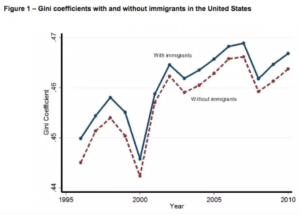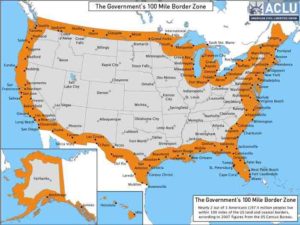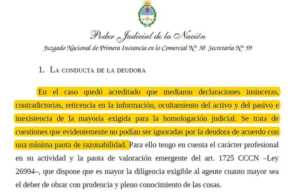Categoría: seguridad
World Health Organization Director-General Tedros Adhanom Ghebreyesus
27 Feb 2020: The Director-General of the World Health Organisation on Thursday warned that no country in the world should assume that it’s safe from the new virus. “No country should assume it won’t get cases. That could be a fatal mistake, and quite literally,” Tedros Adhanom Ghebreyesus told journalists in Geneva.
Video: AP Archive
9 Marzo 2020: “The bottom line is: we’re not at the mercy of the virus.” “The threat of a pandemic has become very real,” WHO Director-General Tedros Adhanom Ghebreyesus says. “But, it would be the first pandemic in history that could be controlled.”
Video: ABC News
Marzo 11 2020: The World Health Organization (WHO) has officially declared the outbreak of novel coronavirus disease, COVID-19, a pandemic. We have rung the alarm bell loud and clear. WHO director-general Dr. Tedros Adhanom Ghebreyesus made the announcement at a press conference Wednesday.
Video: Global News
Marzo 13 2020: Europe Has Now Become The Epicenter Of The Pandemic. Any country thinking “that won’t happen to us, is making a deadly mistake,” warned World Health.
Video: NBC News
Marzo 18 2020: More laboratories are needed. Think in innovative ways to fight this virus.
Video: World Health Organization (WHO)
Marzo 20 2020: “Today I have a message for young people: You are not invincible, this virus could put you in hospital for weeks or even kill you. Even if you don’t get sick the choices you make about where you go could be the difference between life and death for someone else,”. World Health Organization Director-General Tedros Adhanom Ghebreyesus.
Video: Bloomberg Politics
“Si el sexo fuera un deporte, tendría muchas medallas de oro”: la vida en un burdel de Estados Unidos cuyo futuro se decidirá en las próximas elecciones
Un letrero luminoso parpadea sobre la barra del local, débilmente iluminado. Algunas chicas en lencería o ligeramente vestidas están sentadas en sofás de terciopelo con computadoras portátiles y teléfonos.

Imagen: https://ichef.bbci.co.uk/news/660/cpsprodpb/C989/production/_103539515_976xbunny-bar-at-bunny-ranc.jpg
Air Force Amy camina alrededor de la piscina sobre sus zapatos de tacón para mostrarme el gimnasio donde las mujeres pueden ejercitarse entre los clientes. Señala el patio para barbacoas y el jacuzzi antes de abrir la puerta de un garaje en el que había algunos cuatriciclos polvorientos.
“Tenemos todo lo que necesitamos aquí, incluso ponis en el establo de atrás”, dice. “Yo no monto porque es muy arriesgado. Necesito mi cuerpo para trabajar”, agrega entre risas.
Estamos en el burdel Bunny Ranch (Rancho Conejito), el más famoso de los 21 burdeles legales esparcidos en las zonas rurales del estado de Nevada, en Estados Unidos. Los burdeles son legales en Nevada desde 1971, pero en uno de los 16 condados del estado esto podría estar a punto de cambiar.

El Bunny Ranch es el burdel más famoso de los 21 legales esparcidos por la Nevada rural. Imagen: https://ichef.bbci.co.uk/news/624/cpsprodpb/F099/production/_103539516_976ximg_5670.jpg
El Bunny Ranch está ubicado en medio de un paisaje de arbustos salpicado de estaciones de servicio, casinos y tiendas de armas. Se encuentra justo dentro de la línea del condado de Lyon. La prostitución está prohibida en la cercana Carson City, la capital del estado de Nevada, y otras áreas urbanas.
Coincidiendo con las elecciones de medio término en Estados Unidos, el próximo 6 de noviembre, los votantes del condado de Lyon también tendrán que decidir si ponen fin o no a los burdeles legales.
“Me encanta mi trabajo”
Detrás del bar hay un pasillo, que lleva a docenas de habitaciones, cada una ocupada por una trabajadora sexual a cambio de una renta diaria.
Cuando un cliente toca el timbre de la puerta, una campana interna convoca a las trabajadoras sexuales a la recepción. Cuando el cliente elige a una de las mujeres, ella se lo lleva a su habitación a negociar un precio. La inmensa mayoría de los clientes son hombres, aunque ocasionalmente llega alguna pareja.
Air Force Amy aún es, a sus 53 años, una de las mujeres que más ganan en el burdel -dice que recauda alrededor de medio millón de dólares al año-. Las paredes están decoradas con fotos de ella en su juventud.
Con su cabello rubio platino, su cintura de avispa y sus uñas rojas brillantes, parece la estrella de una telenovela de los años 80. Pero su conversación alegre también me recuerda a la sex symbol del Hollywood de los años 30, Mae West.
“Si el sexo fuera un deporte, tendría muchas medallas de oro”, dice Air Force Amy. “Nací con este talento y me encanta mi trabajo. ¡Veo a todos esos hombres, pasamos un buen rato, me dan dinero y se llevan su ropa sucia a casa con ellos!”
Admite que no tiene algo parecido a una vida hogareña. “¿Para qué casarme y hacer a un hombre miserable cuando puedo hacer felices a miles?”, se ríe.
Su falta de entusiasmo por una vida familiar es comprensible. Criada en el Ohio rural, Amy se describe a sí misma como una “niña salvaje” que dejó su casa a los 13 años. Les permitía a los niños en la escuela que le bajaran las pantaletas a cambio de dinero para el almuerzo.
Dice que ahora puede detectar a un cliente que está borracho o es peligroso porque, como adolescente fugitiva, aprendió por la vía difícil: vendiendo sexo en la carretera para sobrevivir.

“Si el sexo fuera un deporte, tendría muchas medallas de oro”, dice Air Force Amy. Imagen: https://ichef.bbci.co.uk/news/624/cpsprodpb/117A9/production/_103539517_976x20141103-143755-327-edi.jpg
Y, sin embargo, Amy terminó haciendo un buen trabajo con la Fuerza Aérea de Estados Unidos. A finales de la década de 1980, ella estaba en Filipinas enseñando a los militares cómo defender una pista de aterrizaje en la jungla.
Amy cuenta que pasó por algunas experiencias angustiosas en Asia que la dejaron con un trastorno de estrés postraumático y un problema con la bebida.
Cuando regresó a EE.UU., dejó la Fuerza Aérea y empezó a trabajar en burdeles donde las mujeres tenían prohibido abandonar el lugar durante un turno de tres semanas.
Finalmente, Amy se encontró con Dennis Hof, propietario de Bunny Ranch, quien la invitó a trabajar para él.
Él dice que las mujeres en sus establecimientos son libres de ir y venir y no se refiere a ellas como empleadas; prefiere llamarlas “contratistas independientes”.
“Una industria vibrante y moderna”
Hof posee un tercio de todos los burdeles legales de Nevada, y cuatro de ellos en el condado de Lyon. Para él, las mujeres como Amy son la cara exitosa de una industria vibrante y moderna.

“Este es un negocio sucio, repugnante y lleno de drogas, hasta que lo legalizas”, dice Dennis Hof, el magnate de los burdeles. Imagen: https://ichef.bbci.co.uk/news/624/cpsprodpb/10C32/production/_103385686_976xdennis-hof-with-two-sex.jpg
“Estas chicas son mujeres de negocios, somos socios“, dice Hoff, sentado en el burdel con su brazo rodeando la cintura de otra de las trabajadoras sexuales. Ella, conocida entre los clientes como Honey, tiene alrededor de 20 años; la edad de Amy cuando comenzó hace casi tres décadas.
“Trabajos juntos”, agrega él. “Este es un negocio sucio, repugnante y lleno de drogas, hasta que lo legalizas”.
Hof llevó la industria de los burdeles al siglo XXI, con un toque del glamur de Hollywood y marketing inteligente.
Al igual que en una oficina o concesionario de automóviles, los nombres de lasempleadas del mes se muestran en una cinta electrónica dispuesta en la pared. Algunas son elogiadas y reciben obsequios, desde artículos de tocador hasta artilugios electrónicos, para asegurar la mayor cantidad de reservas.
El ambiente es mitad conferencia de ventas, mitad comuna de New Age. Las mujeres tienen que hacer declaraciones positivas como: “Trata de ser un arcoíris en la nube de alguien”.
Hof constantemente las insta a utilizar las redes sociales para atraer a más clientes. “Las chicas que publican, le sacan el máximo provecho, es un hecho”, les dice.
De lo que ganan las mujeres, la mitad se queda en la casa. Y como se jacta en su autobiografía, “The Art of the Pimp”, Hof se ha beneficiado ampliamente.

Exterior del burdel Bunny Ranch. Imagen: https://ichef.bbci.co.uk/news/624/cpsprodpb/18162/production/_103385689_976xhi047637124.jpg
Sin embargo, argumenta que los burdeles legales benefician a todo el mundo.
“La gente necesita entender que si yo soy propietario de cuatro restaurantes McDonald’s en este condado, pagaría US$1.200 al año en impuestos (…) Si tengo cuatro burdeles, pago medio millón de dólares al año en impuestos. Ese es mucho dinero para un condado pequeño”.
Afirma que su negocio contribuye con otros US$10 millones al año a la economía local mediante el empleo de camareros, cocineros, conductores, médicos, peluqueros y otros, y dice que la industria del sexo impulsa el turismo en todo el estado.
Efectivamente, en nuestra primera mañana en el Bunny Ranch, tres hombres equipados como motoristas tocan al timbre. Son turistas de la provincia china de Sichuan, a más de 11.000 km de distancia. “Mis amigos oyeron hablar de este lugar y no podían creer que fuera legal”, dice uno. “Vinimos a verificarlo”.
“Son esclavas”
Sin embargo, si el turismo de este tipo está o no en el interés de Nevada es un debate candente.
Algunos argumentan que los burdeles hacen que todas las mujeres que viven en las cercanías sean más vulnerables a los ataques, aumentan el peligro del tráfico sexual y disuaden a las empresas respetables de invertir en el área.
Pero hasta el momento, los burdeles no parecen haber detenido el desarrollo económico en el norte de Nevada. Tesla construyó recientemente su fábrica de baterías de litio, Gigafactory, a unos pocos kilómetros de un burdel legal en el vecino condado de Storey.
Pero los críticos argumentan que más industrias de alta tecnología llegarían si los burdeles no existieran, y que aquí es donde radica el futuro de Nevada. También tienen objeciones éticas.
Brenda Simpson, del Comité de Acción Política para el fin de la trata y la prostitución, dice que es hora de dejar de mirar hacia otro lado.

La activista Brenda Simpson piensa que las mujeres que trabajan en burdeles son “esclavas”. Imagen: https://ichef.bbci.co.uk/news/624/cpsprodpb/4CCA/production/_103385691_976xbrendaimg_5610.jpg
“Antes se consideraba correcto traer esclavos de África”, dice Simpson en el parque frente al congreso estatal en Carson City. “Y finalmente, alguien tuvo el valor de decir: ‘No, no vamos a tener esclavitud’. Este solo es otro tipo de esclavitud. Estas mujeres en los burdeles legales son esclavas”.
Activistas como Simpson quieren terminar con el trabajo sexual legal en todo el estado. El condado de Lyon fue el único de los 16 condados en el que suficientes residentes firmaron una petición para incluir el cierre de burdeles en la boleta electoral en las elecciones de noviembre.
Si la votación es exitosa, ella cree que otros condados probablemente seguirán el ejemplo.
Su grupo lanzó una reciente campaña llamada “Cerrar el mercado de la carne”. Carteles, folletos y anuncios de televisión muestran a mujeres empacadas en recipientes con envoltura de plástico, como trozos de pollo o cordero.
Melissa Holland, quien dirige un refugio para mujeres que sufrieron abusos en la cercana ciudad de Reno, tampoco compra la imagen de la “prostituta feliz”.
Dice que su organización, Awaken, ayudó a muchas mujeres en todo el estado a dejar la prostitución y encontrar otro trabajo.
Cita un estudio de la industria del sexo de Nevada realizado por un académico californiano que concluye que la prostitución legalizada mejora las condiciones para los proxenetas y los propietarios de burdeles, en lugar de para las mujeres que trabajan allí.
Y denuncia una atmósfera casi de culto en muchos burdeles legales, lo que impide que las empleadas hablen con franqueza sobre los peligros que enfrentan, incluidas las drogas y la agresión sexual.

Melissa Holland no compra la imagen de “prostituta feliz”. Imagen: https://ichef.bbci.co.uk/news/624/cpsprodpb/5698/production/_103386122_976xmelissaimg_3153.jpg
Ninguna de la mujeres que trabajan actualmente en el Bunny Ranch me dijo nada malo sobre su jefe o sus condiciones de trabajo. Air Force Amy asegura que no se siente explotada.
“También gané mucho dinero. No podría haber ganado tanto en la calle y me siento mucho más segura”, dice, señalando el botón de pánico en la pared de su habitación, decorada con cojines plateados brillantes.
Sin embargo, siguiendo el consejo de Melissa Holland, me acerqué a algunas extrabajadoras del burdel.
Durante los dos últimos años, Jennifer O’Kane ha estado diciéndole a cualquiera que escuche que fue violada por Hof. Ella alega que el ataque tuvo lugar en 2011 cuando comenzó a trabajar en su burdel Love Ranch, en el condado de Nye, a un par de horas de Las Vegas.
“Me agarró por el cuello y dijo ‘ahora eres mía’… todo lo que podía hacer era llorar y le supliqué que parara”, me cuenta.
Jennifer dice que cuando fue por primera vez a la policía, no le tomaron una declaración adecuada y no se asignó ningún número a su caso. Hace dos años, acudió a una reunión de funcionarios del condado de Nye e intentó escalar sus acusaciones contra Hof, pero fue silenciada.
Carrera política
Al teléfono, Hof niega rotundamente la versión de los hechos de O’Kane. “Esta es una empleada descontenta que despedimos. No es verdad”, dice, calificando sus acusaciones de “absurdas”.
“De todos modos no era el tipo de chicas con las que me acuesto”, agrega antes de colgar abruptamente.
El 5 de septiembre se anunció que el magnate de los burdeles está siendo investigado por presunta agresión sexual por el Departamento de Seguridad Pública de Nevada, aunque no está claro si esto está relacionado con las acusaciones de O’Kane o con las acusaciones hechas en 2005 y 2009 por otras dos extrabajadoras sexuales de los burdeles de Hof.

Hof se presenta a las elecciones para la Asamblea Estatal. Imagen: https://ichef.bbci.co.uk/news/624/cpsprodpb/140F8/production/_103386128_976xhof-campaign-poster.jpg
Hof dice que esas acusaciones también carecen de fundamento: él cree que está siendo atacado porque tuvo “el valor” para presentarse a las elecciones para la Asamblea Estatal en el distrito 36, en Pahrump, a las afueras de Las Vegas. Después de ganar las primarias republicanas, comenzó a llamarse a sí mismo “el Trump de Pahrump”.
“Esta iniciativa electoral para cerrar mis negocios y falsas acusaciones de ‘agresión sexual’ son obra de mis oponentes políticos”, me dice. “Lo que pensaron fue: ‘Si le atacamos, intentamos quitarle su negocio, él renunciará’. Bueno, no funcionó. Me hizo más fuerte. Y las elecciones de noviembre van a ser pan comido para mí”.
Mientras, Amy apoya a su jefe tuiteando sobre la jornada de puertas abiertas del burdel para la comunidad.

Air Force Amy con los los ponis en el establo detrás del burdel donde trabaja. Imagen: https://ichef.bbci.co.uk/news/624/cpsprodpb/6FF2/production/_103385682_976xamyhorseimg_3144.jpg
Mientras da manzanas a los ponis en su corral detrás del rancho, parece estar reflexiva. Le digo que leí una entrevista con ella en 2001 en la que decía que iba a dejar la prostitución dentro de un año, porque estaba haciendo mella en su cuerpo y sus “articulaciones dolían como las de un jugador de fútbol americano”.
Tenía un plan para ahorrar y abrir una agencia inmobiliaria. Entonces, ¿qué pasó?
“No quiero una nueva carrera después de esta”, dice. “Esto es todo. Lo que me gusta es hacer feliz a la gente y romper las barreras de sus problemas sexuales, ¿qué hay de malo en eso?”
Amy dice que no está lista para tirar la toalla.
“Seguiré trabajando aquí mientras pueda caminar… ¡y, aunque no pueda; tal vez seré la primera prostituta en silla de ruedas! ¡Les garantizo que construirán rampas en este lugar para mí!”
Pero en noviembre, es posible que Amy no tenga otra opción. Su futuro depende de si los electores del condado de Lyon votan para cerrar los burdeles o mantenerlos abiertos.
En: bbc
How to Drive in Heavy Rain | Extreme Weather Driving Tips | Ford
How To Drive In A Roundabout
A reporter pressed the White House for data. That’s when things got tense.
Wednesday’s White House news briefing began not with press secretary Sarah Huckabee Sanders but with senior adviser Stephen Miller, whose nationalist immigration positions have been highly influential in the administration. Miller was at the lectern to discuss the Raise Act, legislation crafted by Sens. Tom Cotton (R-Ark.) and David Perdue (R-Ga.) and introduced by President Trump earlier in the day.
During his brief stint addressing the White House press corps, Miller got into two serious arguments with reporters, an impressive if not surprising accomplishment. One, with CNN’s Jim Acosta, included accusations of Acosta having a “cosmopolitan bias” in his thinking about immigration. (Worth noting: Acosta is the son of immigrants.) But the other, a dust-up with the New York Times’ Glenn Thrush, was more significant.
Before getting into that, though, it’s worth isolating part of Miller’s introduction to the topic, the sentence that formed the crux of his rhetoric in defense of a bill that will slice legal immigration in half if it is enacted into law.
“You’ve seen over time as a result of this historic flow of unskilled immigration,” Miller said, “a shift in wealth from the working class to wealthier corporations and businesses, and it’s been very unfair for American workers, but especially for immigrant workers, African American workers and Hispanic workers, and blue-collar workers in general across the country.”
That line does two things that are essential to Miller’s sales pitch. First, it blames income inequality — assuming that money headed to “wealthier corporations” means to those corporations’ owners — on increased immigration. Second, it highlights the effects on black, Hispanic and immigrant workers in particular.
There has been research that links increased income inequality to immigration. A 2015 paper by a trio of researchers found just such a link. But assuming that link, it’s clearly not the only — or even the primary — driver of income inequality. A graph created by those researchers makes clear that the inequality (as measured with the Gini coefficient) would be nearly as high without the effects of immigration.

Image: https://img.washingtonpost.com/wp-apps/imrs.php?src=https://img.washingtonpost.com/news/politics/wp-content/uploads/sites/11/2017/08/Screen-Shot-2017-08-02-at-4.30.41-PM.png&w=1484
The effect of immigrants, the researchers say, is “modest.” But Miller presents the “shift in wealth” as being a “result” of the flow of unskilled immigrants. In other analyses of that increased gap, immigration isn’t mentioned.
Miller’s suggestion that those most affected by this shift are other communities of color, meanwhile, is a classic tactic aimed at appealing to working-class Americans and nonwhite voters by blaming immigrants for their problems. (Hillary Clinton did something similarduring a debate in the 2008 primaries.)
When Miller began to take questions, Thrush asked him very specifically for data to back up his points.
THRUSH: First of all, let’s have some statistics. There have been a lot of studies out there that don’t show a correlation between low-skilled immigration and the loss of jobs for native workers. Cite for me, if you could, one or two studies with specific numbers that prove the correlation between those two things, because your entire policy is based on that. …
MILLER: I think the most recent study I would point to is the study from George Borjas that he just did about the Mariel Boatlift. And he went back and reexamined and opened up the old data and talked about how it actually did reduce wages for workers who were living there at the time.
And Borjas has, of course, done enormous amounts of research on this, as has the — Peter Kirsanow on the U.S. Civil Rights Commission, as has Steve Camarota at the Center for Immigration Studies, and so on and so on.
We’ll jump in here first to note that Miller offered no statistics but did point to one study.
That study from Borjas looked at the migration of more than 100,000 Cubans into Florida in 1980. Borjas found that wages among the least-educated workers in Miami dropped 10 to 30 percent as a result of the influx. Borjas’s study was a direct rebuttal to a 1990 study by David Card, which found “virtually no effect” on wages or unemployment rates, even among the Cuban immigrant community that was already in the area.
Borjas’s study was itself soon rebutted, as the National Review noted, with researchers pointing out that he didn’t account for other demographic shifts in the area that may have had a significant effect on wages.
Miller also notes two other individuals, one of whom works for the staunchly anti-immigration Center for Immigration Studies — and then implies a surfeit of other data with a casual “and so on, and so on.”
THRUSH: What about the National Academies of Sciences, Engineering and Medicine? …
MILLER: One recent study said that as much as $300 billion a year may be lost as a result of our current immigration system, in terms of folks drawing more public benefits than they’re paying in.
Thrush raises a recent study showing that immigrants don’t take the jobs of native-born Americans, with the exception of teenagers who didn’t finish high school, who saw a drop in hours of work.
Miller responds by noting that the study also found that new immigrants cost nearly $300 billion a year more in government spending than they pay in taxes — though that’s the far end of a spectrum of estimates that starts at $43 billion. By the second generation, immigrant families add a net of $30 billion a year.
Then things got tense.
MILLER: But let’s also use common sense here, folks. At the end of the day, why do special interests want to bring in more low-skill workers? And why, historically …
THRUSH: I’m not asking for common sense. I’m asking for specific statistical data. How many …
MILLER: Well, I think it’s very clear, Glenn, that you’re not asking for common sense. But if I could just answer — if I could just answer your question …
THRUSH: Common sense is fungible, statistics are not.
MILLER: … I named — I named — I named the studies, Glenn.
THRUSH: Let me just finish the question …
MILLER: Glenn. Glenn.
THRUSH: Tell me the …
MILLER: I named the studies. I named the studies.
Again: He named one study. At this point, it got personal.
THRUSH: I asked you for a statistic. Can you tell me how many — how many …
MILLER: Glenn. The — maybe we’ll make a carve-out in the bill that says the New York Times can hire all the low-skilled, less-paid workers they want from other countries and see how you feel then about low-wage substitution. …
You know, maybe it’s time we had compassion, Glenn, for American workers. President Trump has met with American workers who have been replaced by foreign workers.
THRUSH: Stephen, I’m not questioning any of that. I’m asking …
MILLER: And ask them — ask them how this has affected their lives.
The exchange went on in this vein for a while, with Miller ultimately pointing not to statistical data showing a need for the policy but to general statistics about unemployment.
Ultimately, Miller again asked Thrush to set aside his request for data and to consider common sense.
“The reality is that if you just use common sense — and, yes, I will use common sense,” Miller said, “the reason why some companies want to bring in more unskilled labor is because they know that it drives down wages and reduces labor costs. Our question as a government is, to whom is our duty? Our duty is to U.S. citizens and U.S. workers, to promote rising wages for them.”
That raised an obvious question, which other reporters subsequently jumped on: Why do Trump’s private businesses continue to seek visas allowing them to hire immigrants for low-wage jobs?
“I’ll just refer everyone here today back to the president’s comments during the primary, when this was raised in a debate,” Miller replied, “and he said: ‘My job as a businessman is to follow the laws of the United States. And my job as president is to create an immigration system that works for American workers.’ ”
It’s just common sense.

Emma Lazarus Poem at Statue of Liberty. Image: http://patriotretort.com/wp-content/uploads/2015/11/Only-a-poem.jpg
In: washingtonpost
Donald Trump to push for new limits on immigration, system based on skills, merit
WASHINGTON – President Donald Trump plans to join with two Republican senators to unveil legislation that would place new limits on legal immigration. It would seek an immigration system based on merit and jobs skills instead of family connections.
Trump was appearing with Republican Sens. David Perdue of Georgia and Tom Cotton of Arkansas at the White House on Wednesday to discuss the bill. The president said at an Ohio rally last month that he was working with the conservative senators to “create a new immigration system for America.”
Trump has made cracking down on illegal immigration a hallmark of his administration and has tried to slash federal grants for cities that refuse to comply with federal efforts to detain and deport those living in the country illegally.
His involvement will put him at the centre of efforts to make changes to the legal immigration system. Previewing the event, White House officials said the bill would aim to create a skills-based immigration system to make the U.S. more competitive, raise wages and create jobs.
The White House said that only 1 in 15 immigrants comes to the U.S. because of their skills, and the current system fails to place a priority on highly skilled immigrants.
Perdue and Cotton introduced the legislation in February that would change the 1965 law to reduce the number of legal immigrants, limiting the number of people able to obtain green cards to join families already in the United States.
The bill would also aim to slash the number of refugees in half and eliminate a program that provides visas to countries with low rates of immigration.
Trump’s appearance was aimed at bringing attention to the bill, which has been largely ignored in the Senate, with no other lawmaker signing on as a co-sponsor. GOP leaders have showed no inclination to vote on immigration this year.
Some immigrant advocates have criticized the proposal, saying that slashing legal immigration would hurt industries like agriculture and harm the economy.
“Our system is broken, but the response should be to modernize it, not take a sledgehammer to it,” said Jeremy Robbins, executive director of New American Economy, a group of business leaders, mayors and others backed by former New York City Mayor Michael Bloomberg that advocates for comprehensive immigration reform.
In: globalnews.ca
The Constitution in the 100-Mile Border Zone
Many people think that border-related policies impact only people living in border towns like El Paso or San Diego. The reality is that Border Patrol’s interior enforcement operations encroach deep into and across the United States, affecting the majority of Americans.
Roughly two-thirds of the United States’ population, about 200 million people, lives within the 100-mile zone that an outdated federal regulation defines as the border zone—that is, within 100 miles of a U.S. land or coastal border.
Although this zone is not literally “Constitution free”—constitutional protections do still apply—the Border Patrol frequently ignores those protections and runs roughshod over individuals’ civil liberties.
Learn more about the government’s 100-mile border zone.
Read the ACLU factsheet on Custom and Border Protection’s 100-mile zone

Image: https://www.aclu.org/sites/default/files/styles/scale_1200w/public/wysiwyg/constitutionfreezonemap.jpg?itok=umNWZ7vX
The Problem
- The Fourth Amendment of the U.S. Constitution protects Americans from random and arbitrary stops and searches.
- According to the government, however, these basic constitutional principles do not apply fully at our borders. For example, at border crossings (also called “ports of entry”), federal authorities do not need a warrant or even suspicion of wrongdoing to justify conducting what courts have called a “routine search,” such as searching luggage or a vehicle.
- Even in places far removed from the border, deep into the interior of the country, immigration officials enjoy broad—though not limitless—powers. Specifically, federal regulations give U.S. Customs and Border Protection (CBP) authority to operate within 100 miles of any U.S. “external boundary.”
- In this 100-mile zone, Border Patrol agents have certain extra-Constitutional powers. For instance, Border Patrol can operate immigration checkpoints.
- Border Patrol, nevertheless, cannot pull anyone over without “reasonable suspicion” of an immigration violation or crime (reasonable suspicion is more than just a “hunch”). Similarly, Border Patrol cannot search vehicles in the 100-mile zone without a warrant or “probable cause” (a reasonable belief, based on the circumstances, that an immigration violation or crime has likely occurred).
- In practice, Border Patrol agents routinely ignore or misunderstand the limits of their legal authority in the course of individual stops, resulting in violations of the constitutional rights of innocent people. These problems are compounded by inadequate training for Border Patrol agents, a lack of oversight by CBP and the U.S. Department of Homeland Security, and the consistent failure of CBP to hold agents accountable for abuse. Thus, although the 100-mile border zone is not literally “Constitution free,” the U.S. government frequently acts like it is.
Much of U.S. Population Affected
- Many people think that border-related policies only impact people living in border towns like El Paso or San Diego. The reality is that Border Patrol’s interior enforcement operations encroach deep into and across the United States, affecting the majority of Americans.
- Roughly two-thirds of the United States’ population lives within the 100-mile zone—that is, within 100 miles of a U.S. land or coastal border. That’s about 200 million people.
- Connecticut, Delaware, Florida, Hawaii, Maine, Massachusetts, New Hampshire, New Jersey, New York, Rhode Island and Vermont lie entirely or almost entirely within this area.
- Nine of the ten largest U.S. metropolitan areas, as determined by the 2010 Census, also fall within this zone: New York City, Los Angeles, Chicago, Houston, Philadelphia, Phoenix, San Antonio, San Diego and San Jose.
Outdated Legal Authority and Lack of Oversight
- The regulations establishing the 100-mile border zone were adopted by the U.S. Department of Justice in 1953—without any public comments or debate. At the time, there were fewer than 1,100 Border Patrol agents nationwide; today, there are over 21,000.
- The Border Patrol often ignores this regulation and rejects any geographic limitation on agents’ authority. At least two federal circuit courts condone Border Patrol operations outside the 100-mile zone, federal regulations and Supreme Court precedent notwithstanding.
- Federal border agents are stopping, interrogating, and searching Americans on an everyday basis with absolutely no suspicion of wrongdoing, and often in ways that our Constitution does not permit.
- For example, Border Patrol, according to news reports, operates approximately 170 interior checkpoints throughout the country (the actual number in operation at any given time is not publicly known). The ACLU believes that these checkpoints amount to dragnet, suspicionless stops that cannot be reconciled with Fourth Amendment protections. The Supreme Court has upheld the use of immigration checkpoints, but only insofar as the stops consist only of a brief and limited inquiry into residence status. Checkpoints cannot be primarily used for drug-search or general law enforcement efforts. In practice, however, Border Patrol agents often do not limit themselves to brief immigration inquiries and regularly conduct criminal investigations and illegal searches at checkpoints. The Border Patrol also frequently pulls over motorists in “roving patrol” stops, often without any suspicion that an immigration violation has occurred.
- The ACLU has documented numerous cases of abuse by Border Patrol and filed lawsuits to obtain more information about the agency’s practices. Given Border Patrol’s lack of transparency, and in the absence of any meaningful oversight, there is still much that we don’t know about the full extent and impact of these interior “border enforcement” operations.
Part of a Broader Problem
- The spread of border-related powers inland is inseparable from the broader expansion of government intrusion in the lives of ordinary Americans. For example, CBP claims the authority to conduct suspicionless searches of travelers’ electronic devices—such as laptops and cell phones—at ports of entry, including international arrivals at airports. These searches are particularly invasive as a result of the wealth of personal information stored on such devices. At least one circuit court has held that federal officers must have at least “reasonable suspicion” prior to conducting such searches and recent Supreme Court precedent seems to support that view.
- These practices also coincide with the spread of numerous border technologies, including watch list and database systems (such as the Automated Targeting System traveler risk assessment program), advanced identification and tracking systems (including electronic passports), and intrusive technological schemes such as the “virtual border fence” and unmanned aerial vehicles (aka “drone aircraft”). With many of these technologies in the hands of private companies, there are powerful financial incentives for the continued “militarization” of the border zone.
- The expansion of government power both at and near the border is part of a trend toward expanding police and national security powers without regard to the effect of such expansion on our most fundamental and treasured Constitutional rights. The federal government’s dragnet approach to law enforcement and national security is one that is increasingly turning us all into suspects. If Americans do not continue to challenge the expansion of federal power over the individual, we risk forfeiting the fundamental rights and freedoms that we inherited—including the right to simply go about our business free from government interference, harassment and abuse.
In: ACLU
Pentagon spends 10 times more on erectile disfunction meds than transgender services
The Pentagon spent $84 million on erectile disfunction medications in 2014, 10 times the estimated annual medical costs for transgender services.
Military Times reported in 2015 that the military spent $84 million on erectile disfunction medications such as Viagra and Cialis the year before. Meanwhile, a 2016 Rand Corporation study estimated that the maximum annual medical costs for transgender military members would be around $8.4 million, Business Insider reports.
“You’re talking about .000001% of the military budget,” being spent on transgender services, Navy SEAL veteran Kristin Beck, who is transgender, told Business Insider.
President Trump announced Wednesday on Twitter his decision to ban transgender people from serving in the military “in any capacity.” He cited the “tremendous” costs for providing medical services for transgender troops.
“Our military must be focused on decisive and overwhelming victory and cannot be burdened with the tremendous medical costs and disruption that transgender in the military would entail. Thank you,” Trump tweeted.
His announcement sparked widespread condemnation from members of both parties, including Republicans who broke with the president to speak out against the ban.
In: thehill
Read also:
Trump to ban transgender people from all military service
Retired transgender Navy SEAL: Tell me to my face I’m not worthy of serving
Hope Funds: más de mil acreedores frenaron una jugada del “Bernie Madoff argentino” en Tribunales
La empresa de Enrique Blaklsey, investigada por estafa y lavado de dinero, presentó un acuerdo preventivo en el fuero comercial con una sospechosa lista de deudas para frenar nuevos juicios en su contra. La oposición fue total: el juez Sebastián Sánchez Cannavó rechazó el acuerdo con un escrito lapidario

Enrique Blaksley, presidente de Hope Funds. Imagen: http://www.infobae.com/new-resizer/Uv2-82G1Q8HyXImPL_FeF9v0Ubo=/600×0/s3.amazonaws.com/arc-wordpress-client-uploads/infobae-wp/wp-content/uploads/2016/11/18140505/0012082658.jpeg?token=bar
Enrique Blaksley Señorans sufrió esta semana su primera derrota judicial, al menos, en un frente. El presidente y socio mayoritario en un 97 por ciento de Hope Funds -la firma financiera responsable de visitas internacionales como las de Roger Federer y Usain Bolt- hoy acusado de lavado de dinero por la AFIP y la Procelac además de estafar a casi 300 acreedores que invirtieron en contratos de mutuo en un esquema similar al cometido por el estadounidense Bernie Madoff, con una causa en su contra en el Juzgado Federal de María Romilda Servini, intentó en febrero pasado una jugada para descomprimir sus problemas judiciales. Fue, precisamente, en el fuero comercial, donde Blaksley y Hope Funds enfrentaron al menos 27 pedidos de quiebra.
La jugada misma estaba contemplada en la Ley 25.589 de Concursos y Quiebras, un recurso perfectamente lícito conocido como APE, o acuerdo preventivo extrajudicial.La mecánica del APE es simple: si dos tercios del total de acreedores de una empresa aceptan firmar el acuerdo y reestructurar su deuda, entonces la empresa sigue a flote y evita una quiebra.
Así, Blaksley apuntaba a neutralizar a su gran caudal de inversores, jubilados, amas de casa y jóvenes con pequeños ahorros, que, tentados por una oferta de tasas anuales de intereses de más de un 12%, pusieron su dinero: la gran mayoría asegura no haber visto un solo peso de vuelta.
Los viejos brokers de Blaksley, vendedores que se dedicaron durante años a captar a estos clientes hoy en pie de guerra, llamaban a los pequeños acreedores para convencerlos de firmar el APE con frases poco felices. “A los que hacen juicio, Enrique -Blaksley- les va a pagar el Día de la Escarapela. Va a priorizar a los pequeños inversores que firmen los acuerdos”, oyó un joven empleado de callcenter que había invertido sus ahorros de 7400 dólares y que terminó por firmar el acuerdo.
El APE tramitó ante el Juzgado Comercial N°30, a cargo del doctor Sebastián Sánchez Cannavó. Los abogados de Hope Funds presentaron el acuerdo el 24 de febrero último, un documento firmado por el contador Sergio Orencel; era el presunto listado de todos los inversores que firmaron el acuerdo y de todas las personas y entidades a las que Hope Funds les debe dinero, al menos hasta el 15 de diciembre de 2016. El APE, por ley, obligaba a Hope Funds a una situación incómoda: decirle a la Justicia cuánta plata debe.
277 personas firmaron el acuerdo, al que accedió Infobae, un número que luego ascendió a 393. El presunto número de deuda fue de 449 millones de pesos, 18 de ellos en deudas laborales, 34,4 en impuestos impagos a la AFIP, otros 395,5 en contratos de mutuo impagos y proveedores. Sin embargo, fuentes cercanas al expediente instruido por Servini encontraron el contenido del acuerdo por lo menos llamativo. Por ejemplo, el documento solo hablaba de Hope Funds y no de otras firmas que tomaron mutuos e imputadas por Servini, como la offshore Marketsite.
También figuran como acreedores una pariente del contador Orencel y varios nombres fuertes de Hope Funds: están Federico Dolinkué, socio minoritario de la firma, por tres millones y Verónica Vega, cuñada de Enrique Blaksley, por 700 mil pesos. No serían los únicos: fuentes que conocen la empresa aseguran que 61 de los 277 firmantes serían vendedores y ex vendedores de la empresa que siguieron leales a Hope Funds, por lo visto, a la fuerza. Muchos de ellos habrían puesto dinero en los mutuos, para no recuperarlo. Seguir en el barco era la única opción.
Infobae publicó los contenidos y las contradicciones del acuerdo de Hope Funds en abril. Blaksley tenía dos obstáculos para que su jugada prosperara: que los acreedores se opusieran y que el juez se negara a homologarla. Ambas cosas ocurrieron.
Luego de la divulgación del informe hubo 1159 presentaciones en contra de Hope Funds en el Juzgado N° 30, que llevó a abultar el expediente con 140 cuerpos y a complicaciones de tráfico en el sistema judicial informático Lex 100. A comienzos de esta semana, luego de casi cuatro meses de evaluación, el juez Sánchez Cannavó decidió anular la estrategia de Blaksley.
El acuerdo fue rechazado, con costas impuestas para el empresario financiero e informes elevados a la AFIP, la PROCELAC y la UIF. También, Sánchez Cannavó le generó un nuevo problema al empresario: envió una nueva denuncia por posibles nuevos delitos a la Cámara del Crimen porteña para que sea sorteada a un juzgado, en paralelo a lo que ocurre en el despacho de Servini. Los términos en el escrito del juez fueron lapidarios.
Sanchez Cannavó apuntó: “En el caso quedó acreditado que mediaron declaraciones insinceras, contradictorias, reticencia en la información, ocultamiento del activo y del pasivo e inexistencia de la mayoría exigida para la homologación judicial. Se trata de cuestiones que evidentemente no podían ser ignoradas por la deudora de acuerdo con una mínima pauta de razonabilidad”, afirmó el magistrado, que habló también de “reiterados incumplimientos”.

Junto a Benedicto XVI y Francisco. Imagen: http://www.infobae.com/new-resizer/AjTAz_Q0j5G99EUtHqTMFVbQ3Z4=/600×0/s3.amazonaws.com/arc-wordpress-client-uploads/infobae-wp/wp-content/uploads/2016/11/18140513/0012083261.jpeg?token=bar
Blaksley hizo una primera presentación ante Sánchez Cannavó junto a un primer acreedor, una suerte de avanzada. Mencionó dos raíces para sus problemas: las dificultades en el lanzamiento del country Verazul en Pilar, cuyo desarrollo está bloqueado por los jueces Sandra Arroyo Salgado y Adrián González Charvay. El empresario también le echó la culpa a la prensa. “Añadió que a ello se le suma una campaña de desprestigio mediático que originó la promoción de acciones judiciales en su contra y que afectaron su credibilidad y solvencia”. Blaksley aparentemente no mencionó, por ejemplo, que la Comisión Nacional de Valores le prohibió operar en noviembre pasado con una orden en su contra.
Blaksley, a sus acreedores, según el documento firmado por Sánchez Cannavó y por varias fuentes alrededor del caso, les ofreció pagarles, irónicamente, con plata generada por Verazul. “Por otro lado están los que se opusieron a la homologación del acuerdo preventivo extrajudicial”, apuntó el juez: “La gran mayoría refirió que no fueron incluidos en el listado de acreedores presentado por la apista, medió ocultamiento del pasivo y del activo, no se presentan las mayorías previstas y se verificaron irregularidades en la contabilidad y en las certificaciones presentadas por la deudora. Muchos también argumentaron que la propuesta resultó ambigua o incomprensible, fraudulenta y abusiva“. Otros acreedores pidieron, directamente, intervención de la CNV y el Banco Central.

Parte del escrito firmado por el juez Sánchez Cannavó. Imagen: http://www.infobae.com/new-resizer/GF8f0NOV66QDJHFya1qbPTO3iY8=/600×0/s3.amazonaws.com/arc-wordpress-client-uploads/infobae-wp/wp-content/uploads/2017/05/11114459/hope-funds-SF-2.jpg?token=bar
Los contadores de Blaksley se demoraron en traer los libros: se detectó el último registro de sueldos correspondiente a diciembre de 2012, se encontraron páginas anuladas en los libros de actas de asambleas, entre otras irregularidades que no fueron explicadas, se quejó Sánchez Cannavó. Hope Funds apenas indicó un solo automóvil en su activo presentado: otra causa en trámite en otro juzgado comercial indica que la firma tendría, al menos, tres.
Hubo otro hueco que también llamó poderosamente la atención del juez: “Hope Funds participa en sociedades y emprendimientos que supuestamente en conjunto facturarían por año U$S 72.500.000 y $ 275.300.000“, apuntó Sánchez Cannavó. Sin embargo, la empresa no informó ser titular de cuentas bancarias, a pesar de haber ofrecido depósitos de hasta 268 mil dólares ante los pedidos de quiebrapresentados. “Por último”, aseguró Sánchez Cannavó, “no puede dejar de observarse que el propio directorio de Hope Funds le reconoció al contador interviniente que podrían existir otros activos que podrían no estar identificados a la fecha de elaboración del informe. Cuando se le requirió a la deudora que identifique cuáles serían esos activos, nada precisó“.
Por último, el juez dudó fuertemente del pasivo presentado en el APE por un motivo bastante lógico. Hope Funds habló de 393 acreedores: al juzgado se presentaron más de mil.
El rechazo del acuerdo y el envío a sorteo de una nueva denuncia a la Justicia penal son una señal para los abogados alrededor de la causa instruida por Servini en Comodoro Py. Víctor Varone, socio del estudio Iezzi & Varone, es uno de los querellantes. “No creo que Blaksley haya previsto que el juez Sánchez Cannavó extrajera testimonio para la Justicia Penal ni que le carguen costos y honorarios.Es importante que todos los damnificados se presenten en la causa que tramita en el Juzgado Federal N° 1 para dar real dimensión de la estafa”, asegura Varone.
El doctor Hernán Vega, abogado del mismo estudio que trabaja en la causa, completa: “El juez consideró que Enrique Blaksley y su empresa habían incurrido en la comisión del delito penal de estafa que se configuraría con la conducta desplegada al intentar homologar el APE con información y documentación falsa o engañosa. Por ello sacó testimonios y los envió a la Cámara Criminal y Correccional”.
Gonzalo Romero Victorica representa junto al doctor Ezequiel Altinier a más de 200 presuntos damnificados que hicieron sus denuncias en la Justicia federal. “Se trata de la manipulación de la documentación, libros y registros societarios, que incluyen alteraciones en las participaciones accionarias de las sociedades, falsedades y omisiones dolosas en las certificaciones contables, ocultamiento y manipulación de créditos y deudas; todo lo cual importa la modificación, alteración y hasta la eliminación de prueba”, se sorprende Romero Victorica tras leer el fallo del juez Sánchez Cannavó. El abogado plantea un punto clave: seguir la ruta del dinero de Blaksley “para recuperarlo y devolverlo a los damnificados”.
Los testimonios ya comenzaron a ser tomados en el juzgado de Servini. Sin embargo, Blaksley, con respecto a los cargos de estafa, no fue llamado a indagatoria hasta el momento, mucho menos detenido.
En: infobae

